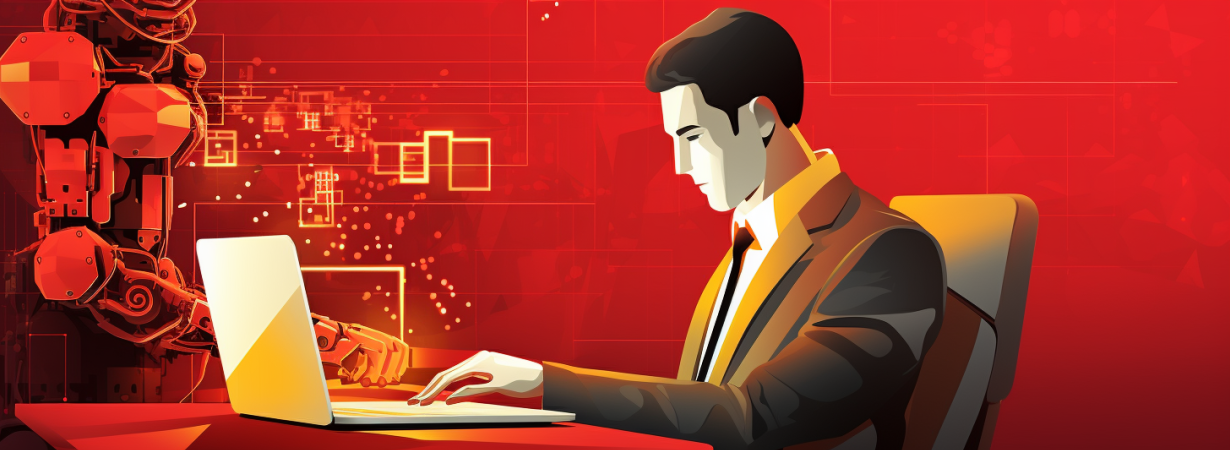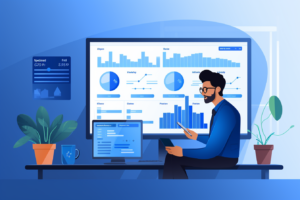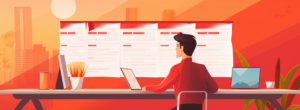A decade of observing AI and work: What can HR learn?
- 6 Min Read
AI researcher and expert Thomas H. Davenport provides an analysis of AI and work, and what HR can learn from both its history and current state
- Author: Tom Davenport
- Date published: Oct 10, 2023
- Categories


I’ve been researching the issue of how artificial intelligence will affect work and workers for about a decade. Like anyone who pays attention to this fast-changing technology, I’ve had a few mental pivots over the years. When I began to study AI and work, several books (Rise of the Robots, No Humans Need Apply) made me quite pessimistic about human job prospects in the future.
But then Julia Kirby and I decided to write an article and book on the subject. We began to interview managers and professionals about what they were actually doing with and planning for AI. In that research, we saw very little evidence of large-scale automation and job elimination. Only in structured manufacturing environments, where each new robot displaces 3.3 human workers on average, has there been substantial job loss. Indeed, many companies have found it very difficult to hire the workers they need over the past several years.
AI and work: The need for augmentation
When Kirby and I published a 2016 book about our findings, instead of suggesting that no humans need apply, we called it Only Humans Need Apply. We discussed five different ways that humans and machines can augment each other and argued that augmentation was both more likely and a better strategy for organizations in thinking about AI and work.
A few years later I concluded with Steve Miller of Singapore Management University that if people were going to be working alongside AI, we humans might benefit from some detailed examples of how that works out.
In 2022 we published a book called Working with AI that includes 29 short case studies of how humans collaborate with smart machines on a daily basis. Almost all of them—with the possible exception of an automated hamburger flipper—were working well for both employees and employers.
In the discussion of the implications, we concluded, “We suspect that even with the relentless trajectory of improvement in AI capabilities, widespread augmentation is here to stay.”
AI singularity is arriving quicker than expected
We did cover our bets, however. The last section of the last chapter was titled, “If the Singularity Comes, All Bets Are Off.” We thought if AI systems could do everything that humans do—only better and faster—it would be difficult for humans to compete in job markets. But we, like many other “experts,” felt that the singularity wouldn’t arrive for several more decades.
I’m not so sure about that now. Generative AI as we currently experience it doesn’t represent the singularity. But it provides a strong hint of what superintelligent machines will be able to do in the relatively near future. It already can write, converse, or create images better than many humans, and it’s still the relatively early days for the technology. Content creators—like the Hollywood writers who are striking in part to keep generative AI out of their jobs—have a lot to fear from it. So do call center agents, actors, entry-level lawyers, and many other job incumbents.
What this means for AI and work
How quickly will generative AI put large numbers of people out of work? I suspect it won’t happen for several years at least. All the predictions consultants and researchers made about how many jobs would be lost to AI have been entirely off the mark. Even those who predicted AI would create many jobs by this time have also been wrong.
And generative AI hasn’t changed the employment situation much yet in large organizations. Many of the companies I speak with that are adopting generative AI for various use cases still say—at least for public consumption—that they are augmenting human labor with the technology, rather than eliminating it. The line usually goes, “We’re freeing up humans to perform the tasks that only humans can do.” That’s been the consistent party line for many years now, and the low unemployment numbers in the U.S. would seem to support it.
In addition, history is on the human workers’ side. Previous technologies that threatened jobs—such as ATMs and Internet banking with regard to bank tellers—didn’t decrease the number of teller jobs, but only slowed their growth.
In jobs like newspaper reporting, although AI to write stories has penetrated the industry (particularly at the Associated Press, which just struck a deal with OpenAI to collaborate on generative AI-written stories), the decline of newspaper advertising was a bigger factor in job loss. Generative AI may speed up the decline of this and other waning professions, but I doubt it will be dramatic.
The role of the ‘copilot‘
What we will see happen quickly, however, is that many jobs will involve working with AI as a collaborator or as a “copilot.” I have long believed that the only people who will lose their jobs to AI in the near term will be those jobholders who refuse to work with AI.
They will be left behind as AI makes human workers in many jobs more productive and effective. Those who work alongside AI will have to adopt new skills and behaviors.
The fact that generative AI today is not fully independent but rather a “copilot” for human workers provides an opportunity for HR organizations to engage in policy and process.
Encourage your employees to use generative AI systems that improve their productivity and effectiveness, but remember HR should participate in the creation of guidelines that employees should follow. Prompts, for example, should not result in public exposure of a company’s private intellectual property.
View AI outputs as a “first draft” rather than a final output and ensure the user then edits them. Any direct use of substantial portions of text, code, or images should be acknowledged by readers and stakeholders. When the generative AI use substantially changes a job, HR should participate in job and task redesign and should consider the impact on the workforce overall.
But there is little doubt that generative AI portends a scarier future. Over the long term successor versions of the already-impressive generative AI tools we have today are likely to hasten the pace of job loss. We should begin to prepare now for providing humans with money to live on and something useful to do when there are no longer enough jobs that only humans can do well.








